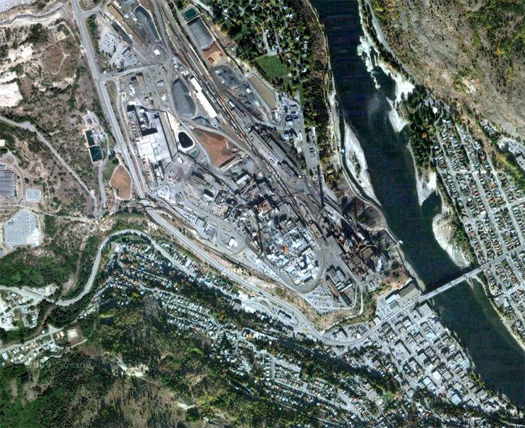25,000 liters of electrolyte spill at Teck
Sunday afternoon, while undergoing routine operations checks at Teck Trail Operations, an employee noticed a leak in the lead refinery building.
The leak, as it turned out had, occurred as a result of a failure of the sealing system in the electrolyte holding chambers.
It is estimated that 25,000 liters of the acidic solution was spilled into the ground beneath the refinery.
The electrolyte spilled is an acidic solution that is key in the lead refining process, where it is used to dissolve the lead from impure lead anodes.
The leak site itself is fairly central to the Teck Trail property, slightly closer to the river side than the highway side.
At this time, thanks to readings from an existing network of monitoring wells in and around the area of the leak, the spilled electrolyte is not believed to have migrated onto adjacent property or into the Columbia River system.
As the material was spilled to ground, it is not believed to pose any threat to humans, fish or wildlife.
After the incident Teck notified the proper environmental bodies include the Provincial Emergency Program and the Ministry of Environment. Teck then immediately initiated an inspection of the leak area as well as other similar areas on the site.
They have already made some immediate repairs to the identified area as they continue to do an in-house investigation of the spill.
The ongoing investigation will aim to determine the exact cause and identify defects in the sealing system and holding area. Inspections of the sealing areas in other lead areas will be conducted to ensure that they are in proper working condition.
“We’re initiating further monitoring work now to determine how to best remediate the area where the leak occurred,” explained Richard Deane of Teck Trail Operations.
“We’re conducting our own Teck investigation and that will determine the exact cause of the sealing system failure. We’ll identify from that corrective measures and from the monitoring work we’re doing we’ll identify potential remediation options.”

























Comments